
March 18, 2025
Rohit Aggarwala: Tapping into Robust Water Management in NYC
Last November, 10 leading visitors from TMG’s Bureau of Waterworks and Bureau of Sewerage visited New York City's Department of Environmental Protection, enhancing their knowledge of NYC’s water management. Rohit Aggarwala, Commissioner of the DEP, shares insights on New York’s water management policies and the significance of participation in initiatives with G-NETS partners.
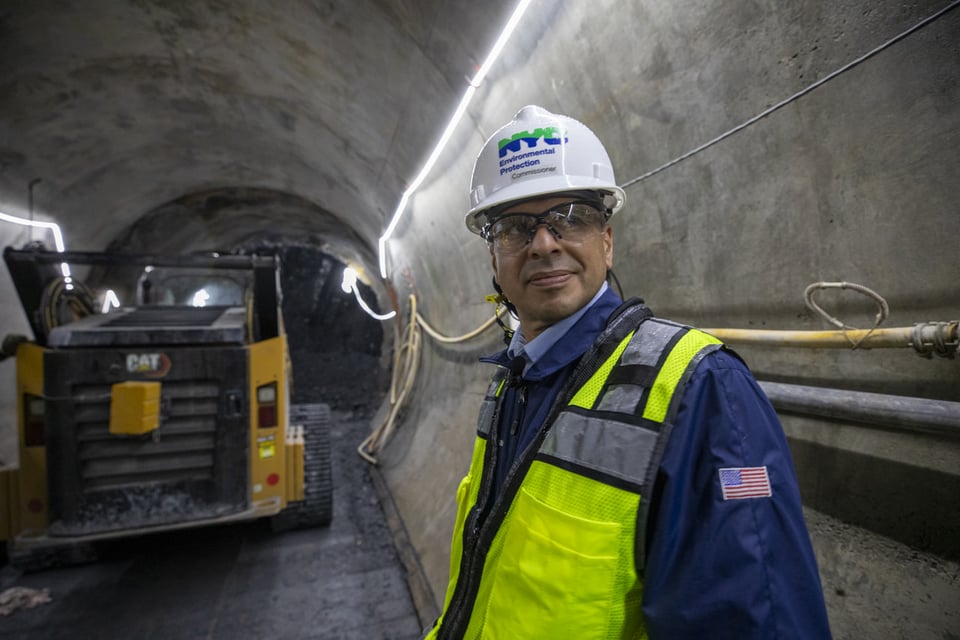
Rohit Aggarwala, Commissioner of the NYC Department of Environmental Protection. Photo: courtesy of The City of New York Department of Environmental Protection
Water is one of our most vital resources and we rely on our city’s water management department to ensure a constant, clean and safe supply. But how well do we understand the challenges involved? Cities like Tokyo face various issues with management of urban water systems, including maintaining public trust, developing infrastructure that keeps pace with the needs of the population, handling industrial waste efficiently and safely, and adapting to climate change impacts such as storms and droughts.
A Customer Relationship Based on Trust
New York has long been a leader in urban water infrastructure investment, dating back to 1842 with the completion of the original system. The city has continuously expanded and upgraded its infrastructure ever since, making it one of New York’s greatest assets. New York’s drinking water is collected from large upstate reservoirs more than 200km north of the city, sourced from 19 reservoirs in the Catskill Mountains.
Customer engagement is a priority for the department. “The water system is one of the aspects of city government that I think New Yorkers view very positively. We start from a position of trust and build on that,” Aggarwala says.
“It’s true with any system that has pipes, you have the occasional water main break. But one of the things we do is never letting crews leave a site until the water is fixed. People appreciate that—we will have a crew there all night, no matter the weather, getting the work done to ensure the water is turned back on,” he points out.
Residents have also benefited from New York’s investment of tens of billions of dollars over the past 30 years to clean up its harbor, improve wastewater treatment and reduce combined sewer overflow.
“When I was a child, New York Harbor was still quite dirty, but now it is remarkably clean. Every year, we have whales, dolphins and even seahorses visiting the harbor,” Aggarwala says. “It's a great success story in terms of pollution reduction. Seahorses are a bellwether species, and their presence indicates consistently clean water.”
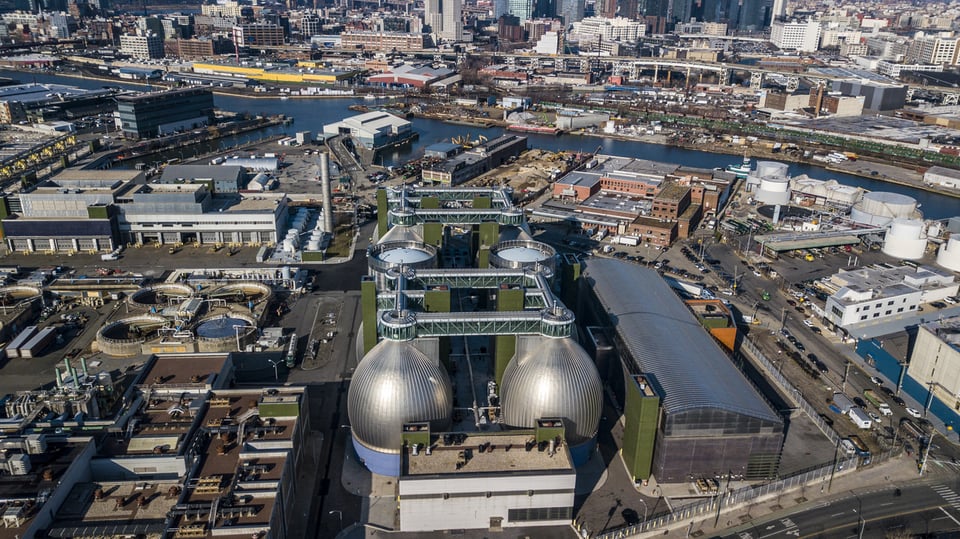
Newtown Creek Wastewater Resource Recovery Facility: Built in 1967, it processes wastewater from over one million residents. Photo: courtesy of The City of New York Department of Environmental Protection
Climate Change Brings Challenges
Aggarwala says that New York is fortunate, in that while climate change has many effects, the long-term trend for the Northeastern U.S. is increased rainfall rather than drought. Unlike parts of Europe or the Western U.S., the city doesn’t face a long-term drought risk, though short-term droughts do occur. October of 2024 was the driest on record, leading to a forest fire in a small city park in Manhattan—something no one expected to see.
On the other hand, New York has experienced multiple stormwater flooding events, with four of the five most intense rainfalls on record occurring in the past three years. “The worst, during Hurricane Ida on September 1, 2021, doubled our recorded maximum rainfall intensity. Sadly, thirteen people died, mostly from drowning in basement apartments. It happened at night, so many victims were asleep at home,” he explains.
In response to these challenges, New York has been investing in and implementing various policies to secure the water supply for its citizens. The city was an early adopter of green infrastructure—an approach to water management that protects, restores and mimics the natural water cycle while enhancing community safety and quality of life.
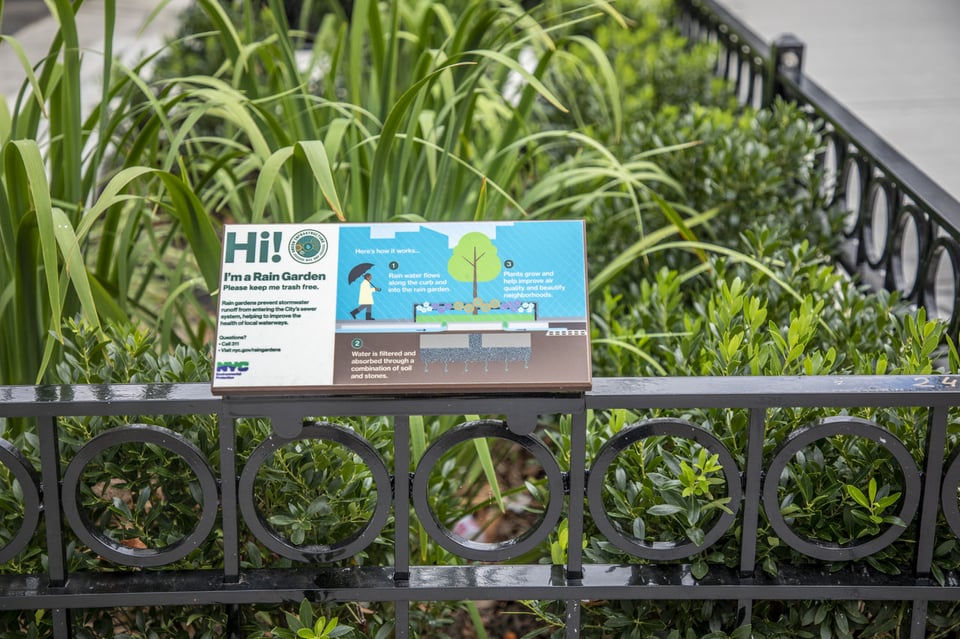
This rain garden is just one example of green infrastructure in New York City. Photo: courtesy of The City of New York Department of Environmental Protection
Working in Harmony with Nature
One such initiative is the use of rain gardens—depressed areas in the landscape that collect rainwater from roofs, driveways or streets and allow it to soak into the ground. “Since the early 2010s, we've used rain gardens to absorb water before it reaches the sewer. We build about 1,000 annually and now have 13,000 citywide,” says Aggarwala.
“Another strategy we’ve adopted is using natural water bodies as storage areas by connecting high-level storm sewers to lakes and other natural features. We call this the blue belt system,” he continues. A recent project in The Bronx involves restoring a stream that had been buried in an underground culvert, a process known as daylighting. Once returned to its natural state, the stream gains significantly higher capacity for stormwater management.
Aggarwala notes that this approach is a powerful environmental management tool because exposed bodies of water naturally regulate stormwater. The city is now applying the same method in higher-density areas, collaborating with the New York City Parks Department to identify suitable bodies of water within city parks.
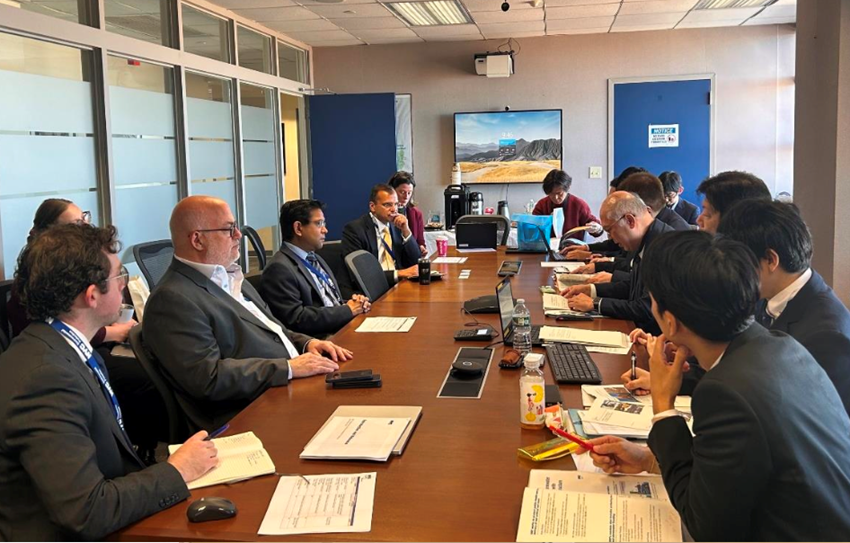
As part of the G-NETS Working Group joint project, representatives from Tokyo's Bureau of Waterworks and Bureau of Sewerage visited New York in November 2024.
Towards a More Connected Future
Aggarwala highlights some interesting differences between Tokyo and New York that arose from discussions during the recent visit: While Tokyo meters water usage for each apartment unit, New York meters by building. As a result, most New Yorkers do not pay separately for water, which is included in rent or common charges, and generally only single dwelling residences are directly metered. Despite having a population of 8.5 million, New York has only about 800,000 water meters—far fewer than Tokyo.
A decade ago, New York transitioned to automatic meter readers, installing transmitters that send data wirelessly every 15 minutes. This system provides detailed water consumption data and supports a leak detection program. If a building’s water use spikes, alerts are sent, and those enrolled in the program receive credits for fixing leaks, creating an incentive for prompt reporting and repairs.
Aggarwala was impressed with the comprehensive visit his bureau received from their Tokyo counterparts in November, which facilitated valuable dialogue and knowledge-sharing. “As I mentioned, we learned that Tokyo meters individual units, unlike New York. My deputy commissioner for customer service, who oversees billing, was really intrigued by the idea of metering at the residential unit level.”
“We also found that Tokyo’s stormwater infrastructure is more advanced. Their underground storage and retention standards are more ambitious than ours, and we’re now considering increasing our own design standards,” he adds.
Looking ahead, Aggarwala points out that this kind of exchange with counterparts in other cities and countries will become increasingly important. “Climate change is going to push water utilities to do things differently from what they’ve done over the last fifty years. And one of the best ways to learn is by seeing how others are tackling similar challenges.”
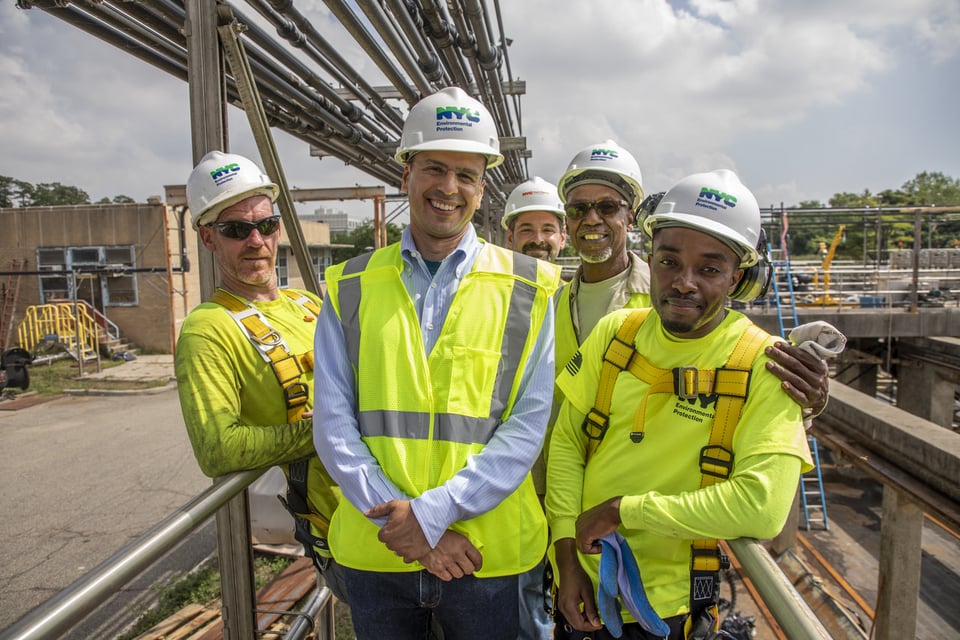
Rohit Aggarwala (center), Commissioner of the NYC Department of Environmental Protection. Photo: courtesy of The City of New York Department of Environmental Protection
Rohit T. Aggarwala
Commissioner, New York City Department of Environmental Protection
With a diverse career spanning both city government and the private sector, Rohit T. Aggarwala’s former roles include President on the Board Directors of the C40 Cities Climate Leadership Group, and being part of the founding team at Sidewalk Labs, Google’s urban technology startup. He has been in his current role since 2022.